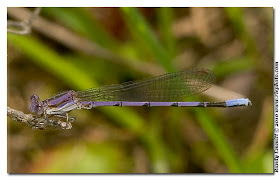So here we go some of my best photos of the many species from our visit to Spruce Knob a week ago.
Pink-edged Sulphur, Colias interior on Ox-eyed Daisy
This is a northern species, it feeds on blueberries.
We saw hundreds of them on this trip what a delight, more photos below.
This is a northern species, it feeds on blueberries.
We saw hundreds of them on this trip what a delight, more photos below.
Pink-edged Sulphur on Red Clover.
Here we have a female albino sulphur. With these you can not tell for sure if it is a Clouded or Orange Sulphur. This was my first one this year.
Here we have an Eastern Tiger Swallowtail that has much more yellow in the hindwings than I have ever seen in our area. Common Ringlet, Coenonympha tullia
We saw maybe 40 to 50 of these butterflies. Back in 2003 I saw thousands of them in this area. Another northern species.
We saw maybe 40 to 50 of these butterflies. Back in 2003 I saw thousands of them in this area. Another northern species.
Another northern species the Harris' Checkerspot, Chlosyne harrisii
Saw only 5 this trip and as you can see they were past their prime.
See my website for better photos and info on them.
The Fritillaries!See my website for better photos and info on them.
Meadow Fritillary, Boloria bellona
The smallest of our frits. This one was checking out fresh deer bones along Gandy Creek.
The smallest of our frits. This one was checking out fresh deer bones along Gandy Creek.
Above and below are Atlantis Fritillary, Speyeria Atlantis on Common Milkweed
The above photo was one of those Oh, wow photos knowing it was special before I chimped it.
If you do not know what chimping is, it is when you take a digital photos and you look at the display. See my page on these butterflies.
A Red Admiral, Vanessa atalanta on Viper's Bugloss, Echium vulgare a very good nectar plant for butterflies, from Europe and Asia though....
My page on Red Admirals.
Here is a female Mourning Cloak, Nymphalis antiopa She was laying eggs in the only willow bush at the top of Spruce Knob the highest elevation in West Virginia. That willow has always had Mourning Cloaks every time I have visited there. This one was drying off after a quick thunder shower that came in while I was photographing the Gray Comma below.My page on Red Admirals.
This Gray Comma, Polygonia progne was hunkering down for an approaching thunder storm. I grabbed the spruce limb and pulled it down, the big camera could not focus one handed. It was a strong limb to pull down so I got out my trusty G11 Canon point and shoot and took this photo from an inch away well over my head with one hand. BTW Meg had already fled to safety in the car, I was thinking this might be the elusive Green Comma which I have not yet seen.
Our first stop in the West Virginia mountains led us to this rare Gray Comma above and below. It even nectared on a daisy but I failed to get a photo. We saw 4 of these at different sites over the two days were were there. Four might have doubled the number of Gray Commas I have seen.
Along Gandy Creek I found hundreds of grass skippers on these deer bones. The dark ones with lighter centers are Peck's Skippers usually 6-8 a day is a good day for them, this spot had close to one hundred of them. The other plain looking skipper is the European Skipper which we saw at least a thousand of them over the two days we were there. If you found flowers that butterflies liked it was a sure bet European Skipper would be seen.
In case you did not notice every butterfly species shown above has a link to my pages on that species, feel free to check them out.


















































